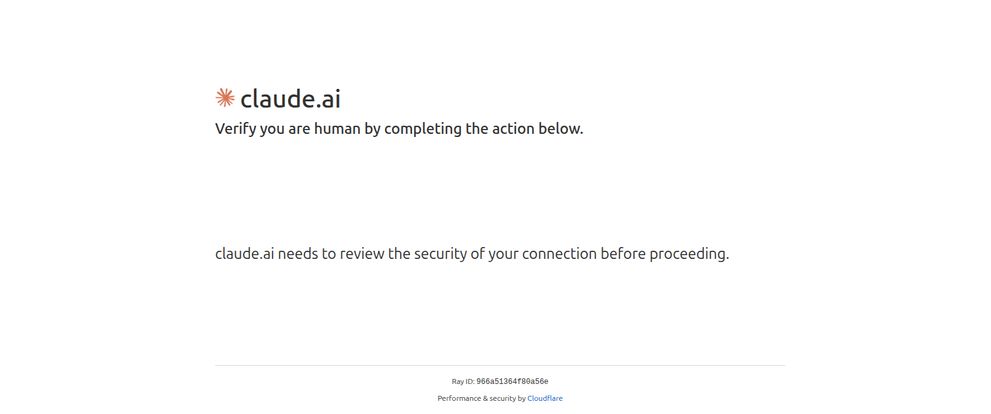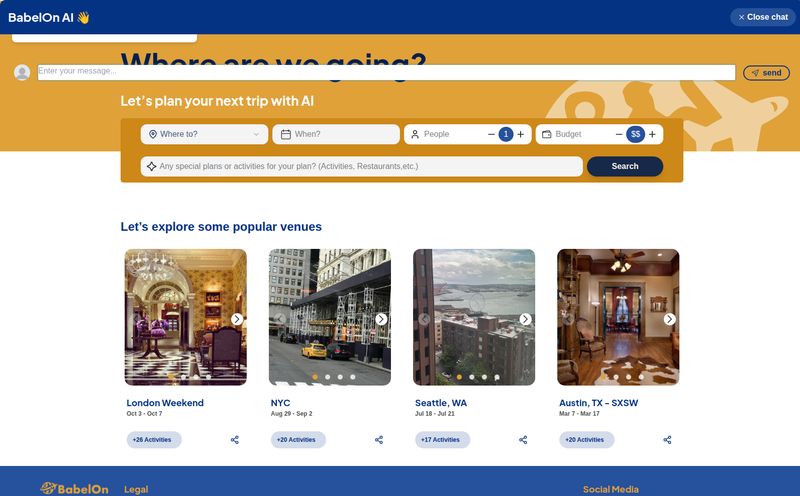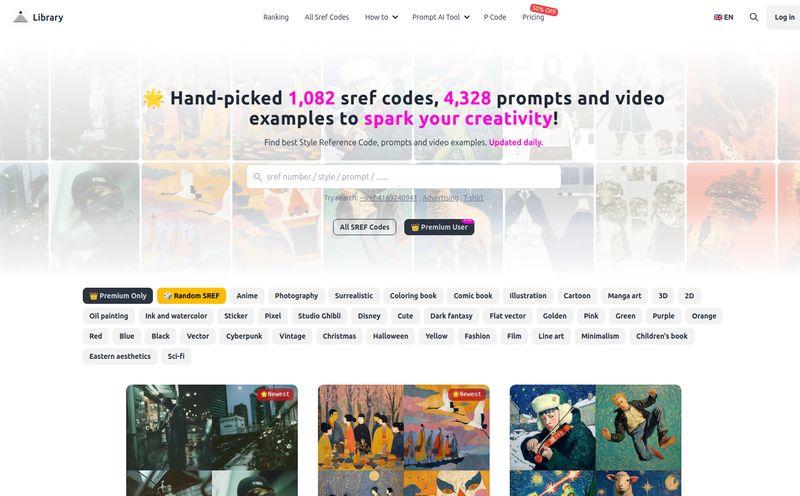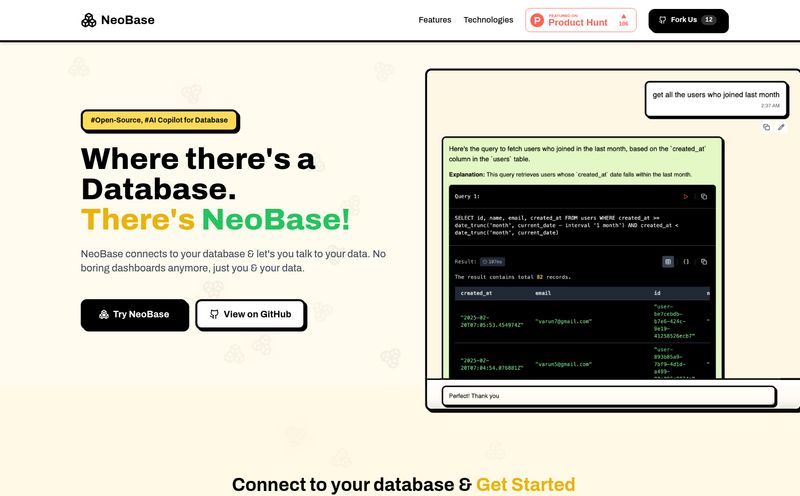Alright, let’s have a real chat. You open a new tab, type in the URL for the latest, buzziest AI tool, and what’s the first thing that happens? You’re greeted with a screen that says, “Verifying you are human.”
You get that little loading spinner, a moment of digital purgatory where a system somewhere is making sure you’re not a bot trying to crash the party. I literally just went through this with claude.ai. It’s a familiar, slightly annoying dance we do online everyday. But it got me thinking. In a world now absolutely saturated with AI chatbots, is the tech inside worth that little wait? Is this one, Claude 2 from Anthropic, actually any different from the rest?
Because let’s be honest, the AI space is getting crowded. It feels like a new model or “game-changing” platform drops every other week. As someone who lives and breathes this stuff for my job in SEO and traffic generation, I've become a bit jaded. But I keep hearing whispers about Claude, about how it’s… nicer? More thorough? Safer? So, I pushed past the captcha and spent some serious time with it. Here’s what I found.
So, What on Earth is Claude 2?
In a nutshell, Claude 2 is a large language model and AI assistant created by Anthropic. If you haven't heard of Anthropic, they’re a big deal. Founded by former senior members of OpenAI, their whole mission is built around creating AI that is helpful, harmless, and honest. A pretty tall order.
They describe Claude as a “friendly, enthusiastic colleague or personal assistant.” And you know what? That’s not just marketing fluff. It really does feel that way. It’s less of a cold, calculating oracle and more like a very smart, very eager-to-please collaborator. You interact with it using plain old English (or other languages), and it helps you with, well, a whole bunch of things.
My First Impressions and The User Experience
After the brief “prove you’re not a robot” screen, you land on a very clean, minimalist interface. No clutter, no confusing menus. It’s just you and a chat box, which I appreciate. It gets right to the point.
My first test was simple. I fed it a long, jargon-filled article about a recent Google algorithm update and asked it to summarize the key takeaways for a client who isn’t tech-savvy. This is a real-world task I do all the time.
The result? I was pretty impressed. It wasn’t just a list of bullet points. It was a well-written, easy-to-understand paragraph that captured the essence of the article perfectly. It even adopted a slightly more professional, yet simple, tone as requested. It was a good start.

Visit Claude
The Good Stuff: Where Claude 2 Really Shines
After kicking the tires for a while, a few things really stood out to me as major wins for Claude 2.
A More Natural Conversationalist
This is probably the biggest one. The personality is just… better. I’ve spent countless hours with various AIs, and they can often feel sterile. Claude has a certain warmth to its writing style. It uses contractions, phrases things in a more human way, and generally feels more approachable. For tasks like drafting emails, writing blog post intros, or brainstorming creative ideas, this makes a huge difference. Its a subtle thing, but it matters.
The Power of a Massive Context Window
Okay, let’s get a little technical for a second, because this is important. Claude 2 launched with a 100,000 token context window (and the Pro version now has 200k). What does that mean in English? It means you can paste an entire book—literally, something like The Great Gatsby—into the chat box and ask questions about it. Its memory is gigantic.
This is a superpower. For a researcher, lawyer, or student, the ability to upload a 75-page research paper or a long legal document and have the AI summarize it, find specific information, or compare arguments is incredible. Most other readily available models choke on that much text. This, for me, is Claude’s killer feature.
Improved Performance and Accessibility
The model is quick and the quality of the output is consistently high. It's available both through a free (with limits) web interface and a paid API for developers who want to build applications on top of it. This dual approach is smart, letting normal folks like us play with it while also catering to the tech crowd.
The Not-So-Good Stuff: Areas for Improvement
It’s not perfect, of course. No AI is. There are a few things that gave me pause.
The Occasional Slowdown
Remember that loading screen? Sometimes, you feel a version of that during use. For really complex prompts or when the servers are busy, Claude can take a little while to “think.” It’s not a deal-breaker, but in an age of instant gratification, it’s noticeable compared to the sometimes lightning-fast responses of its rivals.
Fact-Checking Is Still Your Job
I can't stress this enough. While Claude 2 is built on a foundation of “honesty,” it can still make things up. This is a problem across all current AI. It can confidently state a falsehood, a phenomenon we call “hallucination.” You should always, always, always double-check any important facts, figures, or claims it makes. Think of it as a brilliant but sometimes forgetful assistant.
Claude 2 vs. The Competition (Like ChatGPT)
This is the question everyone asks. Is it better than ChatGPT? The answer is: it depends on the task.
It’s not about which one is “smarter,” but which one is the right tool for the job. It's like asking if a screwdriver is better than a hammer.
- Choose Claude 2 if… your task involves long documents, creative writing, or you just prefer a more conversational and less-robotic interaction. Its massive context window makes it the undisputed champ for summarizing and analyzing huge amounts of text.
- Choose ChatGPT if… your task is more about raw logic, code generation, or complex step-by-step problem-solving. OpenAI's model often feels a bit more like a pure computational engine.
In my workflow, I find myself using both. I might use Claude to brainstorm blog post ideas and draft initial sections, then switch to ChatGPT for help with a tricky bit of schema markup code. They’re both tools in the toolbox.
Let's Talk About Pricing
This is often the deciding factor, isn't it? Here's the breakdown as of late 2023 / early 2024.
| Plan | Cost | Key Features |
|---|---|---|
| Claude.ai (Free) | $0 | Generous usage limits on the web, access to the powerful model. Limits reset every 8 hours or so. |
| Claude Pro | ~$20/month | 5x more usage than the free tier, priority access during peak times, and early access to new features. |
| API Access | Pay-per-use | For developers. Pricing is based on the amount of text you process (per token). |
The free version is genuinely fantastic for most people to get a feel for it. The Pro version is priced competitively with other premium AI offerings and is worth it if you find yourself hitting the usage limits often.
So Who Is Claude 2 Really For?
After all this, I think Claude 2 really hits the sweet spot for a few groups of people:
- Writers and Content Creators: The natural tone and brainstorming ability are top-notch.
- Students and Researchers: The ability to analyze long documents is a game-changer.
- Business Professionals: Perfect for summarizing meeting transcripts, long reports, or drafting professional communications.
- Anyone who feels other AIs are a bit too…robotic. If you're looking for an AI partner that feels more like a partner, this is it.
My Final Verdict
So, is Claude 2 worth the hype? Yeah, I think it is. It’s not going to replace human thought, and it’s not a magic bullet for all your problems. But it is a genuinely useful, powerful, and thoughtfully designed tool that carves out its own unique identity in a very noisy market.
Anthropic’s focus on creating a helpful and more natural-feeling AI has paid off. Its personality and its massive context window are its true superpowers. I’ve added it to my daily workflow, and it’s staying pinned in my browser tab for the foreseeable future. It’s a welcome new voice in the AI chorus.
Frequently Asked Questions
- 1. What is Claude 2 in simple terms?
- Claude 2 is an AI chatbot from a company called Anthropic. Think of it as a very smart, friendly assistant you can talk to in plain English to help you write, summarize long texts, brainstorm ideas, and more.
- 2. Is Claude 2 better than ChatGPT?
- It's not about being 'better', but 'different'. Claude 2 excels at handling very long documents and has a more natural, conversational tone. ChatGPT is often favored for tasks like coding and complex logical problems. It's best to try both and see which one fits your needs for a specific task.
- 3. Is Claude 2 free to use?
- Yes, there is a very generous free version of Claude 2 available on their website, claude.ai. There is also a paid 'Pro' subscription for about $20/month that gives you significantly more usage and priority access.
- 4. Can Claude 2 access the live internet?
- Generally, no. Like many large language models, Claude 2's knowledge is based on the data it was trained on, which has a knowledge cutoff date. It cannot browse the web in real-time to get up-to-the-minute information on current events.
- 5. What is "Constitutional AI"?
- This is Anthropic's unique training method. In addition to being trained by humans, the AI is also guided by a set of principles (a “constitution”) to ensure its responses are helpful, harmless, and avoid problematic outputs. It’s a core part of their safety-focused approach.
- 6. How can I use Claude 2 for my business?
- There are many ways! You can use it to draft marketing copy, create social media posts, summarize customer feedback from long reviews, answer customer service questions, or even help write internal reports. Its ability to process long documents is especially useful for analyzing quarterly reports or legal documents.
Reference and Sources
Claude 2 Official Website: https://claude.ai
Anthropic, the creators of Claude: https://www.anthropic.com/
More on Constitutional AI: https://www.anthropic.com/index/claudes-constitution



